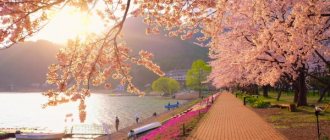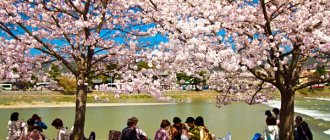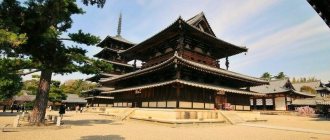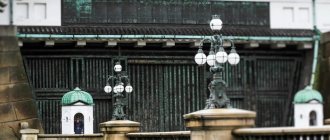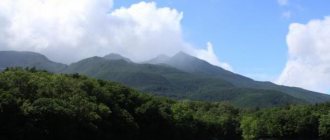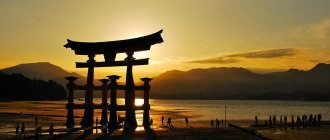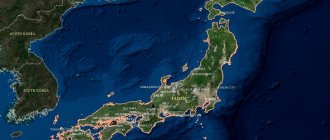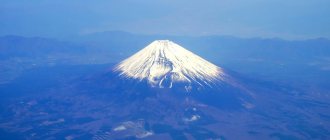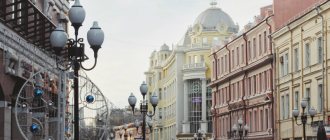Castles of the Land of the Rising Sun. They are not like European fortresses. Another people, another culture. Built centuries ago, few of them have survived to this day.
Osaka Castle is one of those that managed to survive. Time, elements, wars have left their marks on it. Osaka has risen from the ruins more than once. It’s all the more interesting to wander around the park around the citadel, admire the modern city from above, walk through the floors, and touch the history of this unique place.
Osaka Castle - landmarks of the past
Japan, late 16th century. The commander Toyotomi Hideyoshi ordered the construction of a fortress in the city of Osaka. At the same time, more than 30 thousand workers built this citadel: they laid huge boulders in the foundation, poured a stone embankment, and erected walls decorated with gilding.
A supporter of the idea of unifying the country, Toyotomi made the castle the economic center of Japan. All trade routes then led to Osaka. This building has a difficult fate, as does the entire Japanese people.
- 1598 . Soon after the construction was completed, Hideyoshi dies, leaving behind his wife and young son, Hideyori. Before his death, he forced the feudal lords to recognize his son as ruler and appoint a council of elders. Only soon did shogun Tokugawa Ieyasu break his oath. Osaka Castle then became the only refuge for Hideyori and his supporters.
- 1614 . The Tokugawa army, having numerical superiority, was unable to achieve victory. The fortress did not surrender. A peace treaty was signed. But treachery seems to have been Tokugawa Ieyasu's hallmark. When retreating, his troops filled ditches around the citadel.
- The year is 1615. While they were trying to restore the ditches, Tokugawa attacked again and this time successfully. Toyotomi Hideyori and her mother committed suicide, and the castle was completely destroyed.
- 1620–1629 Hidetade, son of Tokugawa Ieyasu, restores the fortress. All that remains from the former are the ditches and the central courtyard.
- 1665 The main tower is struck by lightning. As a result of the fire, it was completely burned out. Almost 300 years later, in 1931, Osaka residents raised money and built a new tower.
- The year is 1868. The war between north and south. The castle was badly damaged; only a few utility rooms remained intact.
- 1942–1945 Firebombing destroyed everything that remained. The fortress was completely turned into ruins.
- 1995–1997 What little remains are being reconstructed. The rest is being rebuilt.
In fact, only the lower part of the walls, several gates and three corner towers have survived to this day. And then there is the history of the citadel: victories and defeats, truth and fiction.
Osaka Castle
Osaka Castle is one of the largest and most impressive buildings, covering an area of one square kilometer. It is a popular attraction in Osaka and has both historical and cultural significance, having played a leading role in the unification of the country in the 16th century.
A building for centuries
The castle was built in the 16th century by one of the famous commanders and politicians of those times, Toyotomi Hideyoshi, on the site of an ancient temple. Hideyoshi always admired Azuchi Castle, which was a fortress for Oda Nobunga, and this was the reason for building his own impenetrable fortress. Its main tower has five floors above the ground and three below it. The walls of the building are covered with gold leaf to attract attention to the castle.
Hideyoshi ruled the city very skillfully and competently; Osaka became the connecting link of the trade routes of the country, which was fragmented due to many years of wars. The huge Osaka Castle became the site of two decisive battles, thanks to which power passed to the Tokugawa for 250 years.
Tokugawa first attacked the fortress in 1614, but the castle survived. Tokugawa ordered the defensive ditch surrounding the fortress to be filled up, but this did not bring the expected results. The commander, having learned that the city residents had again begun to dig a ditch, attacked again, and soon the defense fell, and the ruling Toyotomi clan was destroyed.
Save and deliver
6 years later, a descendant of Tokugawa rebuilt and expanded the fortress. However, in 1665, a lightning strike caused a fire that destroyed almost the entire castle. The fortress stood in ruins for almost three hundred years, and only when the mayor of the city found funds to restore the famous landmark of Japan, restoration work began, which was completed in the 30s of the last century.
From the original buildings, several houses and barracks, the Otemon gate, and the Yagura towers, which are called the towers of a thousand eyes, have reached us. Currently the castle is a museum. On the eight-meter wall you can see sketches of the battle in Osaka, in which 400 thousand samurai took part. Despite all the efforts of designers and restorers, the original interior of the castle could not be restored.
Of course, the fortress has not lost its significance and attractiveness for guests and tourists. Today it looks like a museum with modern elevators. Another interesting place will be the majestic Shitennoji Temple.
Our days
In the center of the city, on a stone embankment, this fortress raises its walls to a height of 20 meters. Around the walls are wide ditches filled with water and a sakura garden.
Nowadays, to get inside, you don’t need to be under siege for months. The castle gates are always hospitably open. In the courtyard, guests are greeted by a monument to Toyotomi Hideyoshi. One of the walls depicts the battle of 1615.
Eight floors (three of them underground). Each floor is a museum. Exhibitions, puppet shows, large-format images - all this is the history of the fortress through the eyes of our contemporaries. Most of the exhibitions located on the floors are temporary. Exhibits are updated every few months. For a fee, visitors are allowed to try on the military clothing of samurai commanders.
On the ground floor there is a cinema room where you can watch a film about the castle and its founder. On the eighth floor there is an observation deck and a souvenir shop. You can go upstairs by elevator or stairs.
Next to the castle garden is a stadium where public events and concerts often take place.
Origin of Osaka
Osaka was built in 1598, during the reign of the Japanese warlord Toyotomi. The main trade routes of Japan passed through the castle. Therefore, active economic activity was carried out on its territory, spreading throughout the country.
Osaka was built on huge stone boulders, the height of which reached 6 meters. The area of the castle is 1 km2. The building consists of five tiers. And three additional tiers go deep underground.
In 1614, war broke out between the Japanese Toyotomi and Tokugawa clans. For a long time, Tokugawa troops besieged the impregnable walls of the castle, but he never managed to enter inside. He ordered his soldiers to fill up the ditches located around the castle. After one year, Toyotomi decided to clear them of stones. But the angry Tokugawa attacked Osaka again. After a long siege, the castle fell. And Toyotomi himself could not stand the shame and took his own life.
Osaka was subject to fires and destruction several times. For example, in 1665, due to lightning that hit the tallest tower, half of the castle burned down. The castle was repaired, but burned down again in 1868.
During World War II, the castle was subject to American bombing. Only two small ruins remain of the building.
After some time (in 1997), Osaka was restored again. Like the Phoenix bird, the castle rose from the ashes.
Now Osaka delights and surprises tourists with its modern architectural style.
Note to tourists
Osaka Castle is open to visitors from 9:00 to 17:00 daily. He does not receive guests for only five days - from December 28 to January 1.
The entrance ticket costs 600 yen (4.2 euros). For children under 15 years old - admission is free.
You can get there:
- Metro. The nearest station is Tanimachi 4-chrome.
- Bus. Get off at the “Babacho” or “Otemon” stop.
- River tram. Go to the “Osaka Castle Pier” stop.
My 100 roads
The castle in Osaka is a symbol of the city, its history, and for people who have never been to Japan, sometimes a symbol of dreams.
– Main tower of Osaka Castle
Part 3 – The Soul of Japan
– Day twentieth – Osaka (Osaka/大阪)
Osaka Castle (Kin-jo/Osaka Castle/大坂城)
Today is October 15, Thursday, the 20th day of our trip. We need to go to Osaka. After getting some sleep, we took our time, got ready and walked to the station. Let me remind you that our hostel (Backpackers Hostel K's House Kyoto) is just a 15-minute walk from Kyoto Station.
– On the Kyoto Station platform
The drive from Kyoto to Osaka is not that long for us as tourists with a JR Pass
(Japan Rail Pass), less than 15 minutes. If you don’t have such a pass, you can use local, non-high-speed trains for 540 yen and it will take about 30-40 minutes. It so happened that we were in Osaka, or rather even at the hotel, by the time breakfast had not yet finished.
It so happened that during our first stay at the Toyoko Inn Shin-Osaka Chuo-guchi Honkan, we never took advantage of the free breakfast, so now, while we were registering and paying, we decided to eat at the same time. I note that at least all hotels of the Toyoko Inn
similar, but the range of breakfast items offered is different. So this Osaka hotel had the best choice, i.e. A large number of rice dishes were accompanied by a fairly large selection of meat dishes. And that's great!
– Fragment of the roof of the Main Tower
Well, as usual, we left our things at the hotel and went to Osaka Castle (Osaka Castle/大阪城)
. Although I went to see him on the first day of my arrival, I didn’t go inside.
We took the JR lines (SHIN-OSAKA -> /JR Kyoto Line/ OSAKA -> /JR Osaka-Loop Line/ OSAKAJOKOEN), about 20 minutes and we were at the park that spreads around the castle. Another 15 - 20 minutes of walking and we are standing near the Main Tower
Osaka Castle
Tenshukaku (Tenshukaku / 天守閣)
Castle in Osaka (Osaka Castle / 大坂城)
- the most important attraction of the city and its symbol, which is one of the largest castles in Japan.
It was built in 1585-1588 by the commander Toyotomi Hideyoshi (豊臣 秀吉)
based on the model of Azuchi Castle, which Nobunaga Oda built for himself ten years earlier.
Osaka Castle
often called “Hideyoshi Castle”, although the concrete structure of the 1997 reconstruction is now just a museum, and the structure of the Main Tower combines the styles of the times of Hideyoshi and Tokugawa, who took the fortress in 1615, already under
Toyotomi Hideyoshi
,
Hideyori
, when the castle withstood the siege of two hundred thousand Tokugawa troops.
– Model of the battle in the museum, Main Tower
While talking about my train trip in Japan, I mentioned the names of Toyotomi Hideyoshi
and
Ieyasu Tokugawa (Tokugawa Ieyasu/徳川家康)
.
The history of the unification of Japan and the struggle for power is connected with these people, and Osaka Castle
turned out to be that most important historical “point” in the struggle for power.
Links to mention
- Himeji – “Castle of the White Heron” – The Story of Princess Sen, granddaughter of Tokugawa Ieyasu
- Nikko 3 – Toshogu – tomb of Ieyasu Tokugawa
- Hakone – “Temple of the Nine-Headed Dragon” – Hideyoshi destroyed the temple, Tokugawa restored it.
- Kamakura – Tokei-ji Temple – about the granddaughter of Toyotomi Hideyoshi
- Kyoto - Ryogen-in (龍源院) - "Dragon Spring Temple" - Hideyoshi ordered Sen no Rikyu to commit ritual suicide
It seems that the place where the Castle stands is not very happy, and also bloody. After all, before Toyotomi Hideyoshi
built a castle here, on this site was built in 1496 the
Ishiyama Buddhist Temple (Ishiyama Hongan-ji / 石山本願寺)
of the militant Pure Land sect, the teachings of Jodo-shinshu (Ikko) with the leader Ren-nyo (Rennyo), which was set on fire by the monks themselves, so that it does not fall to
Oda Nobunaga (織田 信長)
after the 11-year war.
– Main tower
By the way, it was precisely at the time when a temple stood on the site of the castle that the area began to be called “Osaka,” which literally means “big hill” or “big slope.” Before this, the place was called Naniwa (難波)
and was the ancient capital of Japan, the first mention of which dates back to 320 AD. e., and in the same place where the castle rises in modern Osaka, stood the palaces of the kings (the residence of Nintoku). And even earlier, according to one legend, it was in the area of modern Osaka that the first emperor was proclaimed.
– View from the observation deck of the main tower – Shachihoko on the castle roof
It turns out that the history of the place where Osaka Castle
inextricably linked with the history of the city and state.
But let's go back to more documented times, when the castle was built. Toyotomi Hideyoshi
wanted his residence to become the main castle of the country and serve as the personification of the power and greatness of his power. So each province under Hideyoshi's rule had to take part in the construction of the castle. Every day, 20-30 thousand people were employed in construction work, who were sent there from all over the country. Many of the daimyo (head of the province) were assigned to certain construction sites, and they were charged with supplying the construction with materials and labor. By the summer of next year, the main fortification work had been completed. A year later, the main tower of the castle was erected.
– View of the city from the observation deck of the main tower
Huge stones were also delivered from all over the country. Stone from the walls of nearby Buddhist temples and monasteries, and even tombstones from old graves were also used. The largest giant stone is “Tako-ishi”, i.e. The “octopus stone,” 5.5 m high, 11.7 m wide and weighing almost 140 tons, was delivered from Buzen Province in the northeast of Kyushu. A huge stone weighing about 130 tons was brought from Shodo Island. The stones were fastened by pouring molten lead three times, but even without it, the wall must be supported by the own weight of the stones.
Construction of the castle was completed three years later. The area of the castle was about 8 sq. km. Its main five-story tower rose 58 m. For all its formidable impressiveness and austere appearance, the castle was well suited for living and receiving noble guests. Extraordinarily luxurious feasts and all kinds of entertainment were often held here, and tea ceremonies were held. But the castle existed in such splendor only until 1665, when the Main Tower was destroyed by fire from a lightning strike.
– A young man walks his two dogs in the park near the castle
Well, in 1868, during the dramatic events of the Meiji Restoration, the castle burned down, and by the beginning of the 20th century, only ruins remained of the castle, and the remaining premises were turned into a barracks. The main tower acquired its modern appearance only in 1931. Reinforced concrete was used instead of wood. The funds were collected by the Mayor of Osaka from various sources. Nowadays the Castle occupies an area of only one square kilometer; in the Main Tower, as I wrote earlier, there is a museum, and on the 8th floor of the building there is an observation deck.
Maps and useful links
Map of the Osaka Castle grounds (pdf 183Kb) Osaka metro map (pdf 659Kb)
(jpg 991Kb)
(gif 741Kb)
More photos: Australian Photography by Ilya Genkin.
Information in the post may be added and changed! Subscribe to RSS
and don't miss the next articles.
To be continued.
Part 1 – South-West
Part 2 –
Tokyo and surroundings
Part 3 –
The Soul of Japan
– chapter 1 – Evening in Kyoto – Arrival – chapter 2 – Kiyomizu-dera – 1 – chapter 3 – Kiyomizu-dera – 2 – chapter 4 – Temples and Gardens – Golden Pavilion – Kinkaku-ji (金閣寺) – Chapter 5 – Temples and Gardens – Ryogen-in (龍源院) – Chapter 6 – Temples and Gardens – Korin-in (Korin-in/興臨院) and Ryoanji (龍安寺) – chapter 7 – Evening in Kyoto – Kyoto Tower (京都タワ) – chapter 8 – Fushimi Inari (伏見稲荷) – chapter 9 – Byodo-in Temple (平等院) – Temple of Equality – Chapter 10 – Tofuku-ji Temple (東福寺) – Eastern Treasure Temple – Chapter 11 – Yasaka Shrine (八坂神社) – Temple Eight Hills - Chapter 12 - Tenryu-ji Temple (天龍寺) - Heavenly Dragon Temple - Chapter 13 - Nanzenji Temple (南禅寺) and Aqueduct - Chapter 14 - Nishiki Market (錦市場) – chapter 15 – Arashiyama – chapter 16 – Nishijin-Ori Kaikan (Nishijin-Ori Kaikan/西陣織会館) – chapter 17 – Kimono Show (着物ショー) – chapter 18 – Imperial Palace in Kyoto (Kyoto Imperial Palace/Kyoto Gosho/京都御所) – chapter 19 – Hase-dera Temple in Nara (Nara) – chapter 20 – Kyoto Station (京都駅) – chapter 21 – Osaka – Osaka Castle – chapter 22 – Osaka – Shitennoji Temple (四天王寺) – Temple of the Four Heavenly Lords – chapter 23 – Evening in Osaka – Umeda Sky Building (梅田スカイビル) – chapter 24 – Osaka – Aquarium Kaiyukan (海遊館) – chapter 25 – Evening in Osaka – Namba Parks (なんばパークス)
Admire a Shinto shrine
Where: Sumiyoshi-taisha
If you see a torii ritual gate, it means you are looking at a Shinto shrine. This is the national religion of the Japanese, in which they honor the spirits of mountains, forests, rain, plants and animals, as well as deceased ancestors, who are considered protectors of future generations.
Sumiyoshi-taisha in Osaka is the main Shinto shrine of the god Sumiyoshi, the patron saint of shipping. It seems to have preserved its silence and tranquility since its foundation in the 8th century: when you admire the pond from the arched bridge or walk along the shady path, you completely forget that a bustling metropolis is a minute’s walk away.
- The most beautiful holy places in the world
Tickets to Osaka
Hotels in Osaka
general information
The city of Osaka ranks third in Japan in terms of population (2.7 million people). The samurai castle, located there and built more than 400 years ago, played a significant role in the history of Japan in the 16th-17th centuries, withstanding a difficult siege by a huge army.
It is also important to note that 30 thousand people simultaneously participated in its construction.
Osaka Castle address: Japan 540-0002, Ōsaka-fu, Ōsaka-shi, Chūō-ku, Ōsakajō, 1.
Look into the lion's mouth
Where: Namba Yasaka Shrine
In Japan, you don't need to be a tamer to look into a lion's mouth. A fifteen-minute walk from Dotonbori Street is the Namba Yasaka Shrine in the shape of a lion's head. It is believed that the mythical predator swallows evil spirits and gives good luck to people in their affairs. The locals do not specify whether this applies to foreign tourists, but you are definitely guaranteed likes on Instagram.
- The Most Mesmerizing Holy Places in the World
Tickets to Osaka
Car rental in Osaka
Internal exhibitions
Each floor of Osaka Castle houses thematic exhibitions. The most convenient way to view the tower from top to bottom is to first take the elevator to the eighth floor.
- 8th floor. There is an observation deck, a stereoscope “Landscapes of Naniva” and a souvenir shop.
- 7th floor. The Karakuri Taikoki diorama depicting the life of Toyotomi Hideyoshi and the history of that period is presented.
- 6th floor. Just a corridor with no exhibits.
- 5th floor. The exhibition is dedicated to the siege of Osaka Castle in 1615, presented with panoramic images and dollhouse miniatures (all performances are translated with subtitles in English, Korean, Japanese and Chinese).
- 4th floor. Temporary exhibitions dedicated to the reign of Toyotomi Hideyoshi and the history of the castle. The exhibition changes every two months.
- 3rd floor. Temporary exhibitions, a model of Toyotomi Hideyoshi's golden tea room (real size), as well as two miniature models with a view of Osaka Castle from the era of two rulers: Toyotomi Hideyoshi and Tokugawa Ieyasu.
- 2nd floor. Information on Japanese castle architecture and all the elements of Osaka Castle is presented, and replicas of the lurking tiger and mythical shacha fish adorning the walls and roof of the castle are also on display. Here, for a fee, you can try on a helmet and a military samurai Jinbaori cape of Japanese commanders.
- 1st floor. The small cinema screen shows stories about the castle and Toyotomi Hideyoshi, and the shop sells souvenirs.
Experience a Japanese puppet theater
Where: National Bunraku Theater
In Japan, everything is different, and the puppet theater is also not like what we are used to. In traditional bunraku theater, a half-life size puppet is controlled by three puppeteers: one moves it with its head and right hand, a second with its left hand, and a third with its legs. The eyes, mouth and fingers are also movable, so the dolls look almost human.
All three puppeteers are visible to the audience, but it is believed that you quickly stop noticing them. The action is accompanied by playing the shamisen and songs by the gidai, who tells what is happening and voices all the dolls. The National Bunraku Theater in Osaka is a good place to see an unusual performance for the first time. Tickets can be booked online.
- Cards, backgammon, two tables: what they play in different countries
- Unusual traditions and superstitions from around the world
Tickets to Osaka
Hotels in Osaka
Find out the secret of instant noodles
Where: Instant Noodle Museum
In the country where instant noodles were invented, you cannot do without its museum. Take a look inside the reconstruction of the house where Momofuku Ando made his first instant chicken ramen in the late 1950s. Go through the tunnel, which contains eight hundred ramen packages. Make and dry noodles in a master class. And the best part is to create your own unique ramen: buy an empty glass, paint it according to your mood, fill it with noodles, soup base and four toppings of your choice. You can pour boiling water over it and eat it immediately or in the evening, remembering the impressions of the day.
16 unusual museums in Russia that you might not know about
Teleport to the future
Where: Gate Tower Building
Japanese road junctions are reminiscent of calligraphy with their intricacies: difficult to understand, but fascinating.
In Osaka, engineers went even further and laid a highway directly through the 5th, 6th and 7th floors of an office building. The road does not disturb workers: the tunnel is soundproofed and does not touch the high-rise building at any point.
15 places on earth where the future has already arrived
Tickets to Osaka
Car rental in Osaka
